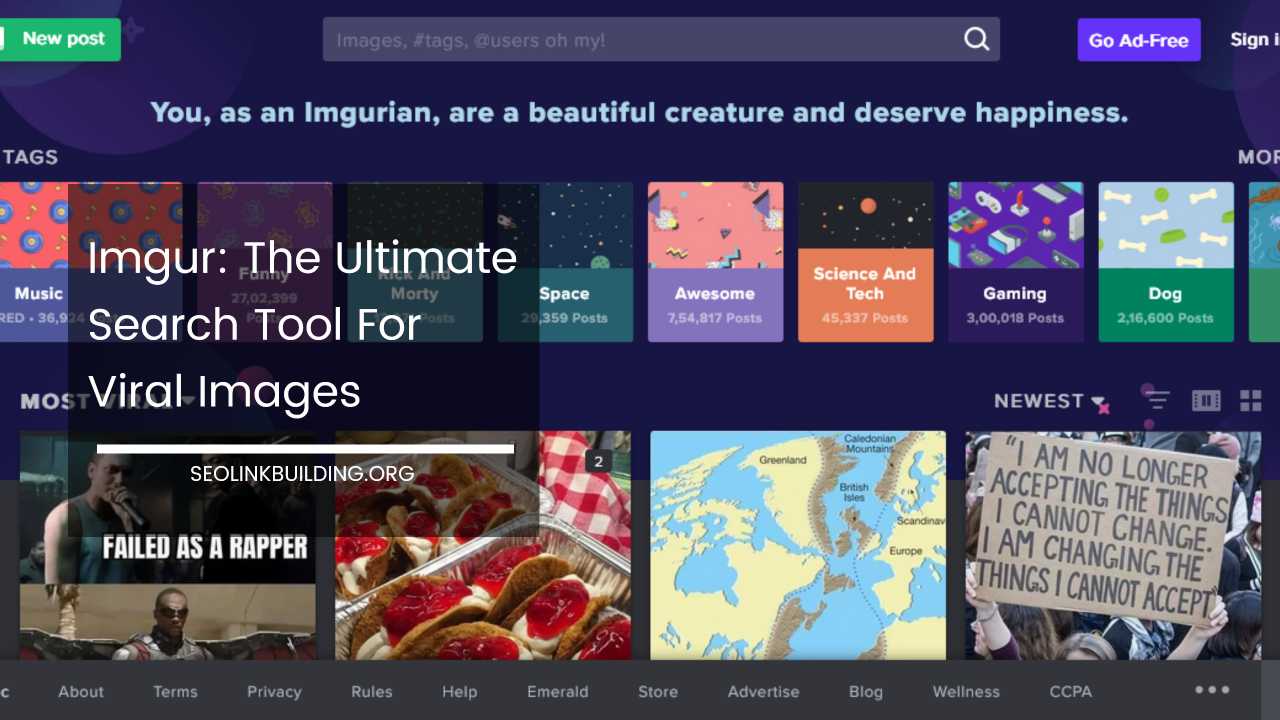How to Start a Blog for Free

Unleash Your Inner Blogger: A Comprehensive Guide to Starting a Free Blog in 2024
The world of blogging beckons! Whether you’re passionate about sharing your travelogues, DIY crafts, or insightful tech reviews, a blog provides the perfect platform to connect with a global audience.
But before diving headfirst into content creation, a crucial first step exists: setting up your blog. Here’s the good news: creating a captivating blog doesn’t require breaking the bank.
In this comprehensive guide, we’ll explore everything you need to know about starting a free blog in 2024.
Choosing Your Blogging Platform: A Launchpad for Success
The first order of business is selecting the ideal platform for your blog. Just like building a house requires a sturdy foundation, your platform serves as the backbone of your online presence. Here’s a breakdown of some popular free blogging platforms, each with its own strengths:
-
WordPress.com: A household name in the blogging world, WordPress.com offers a user-friendly interface and a vast selection of customizable themes. It’s a fantastic option for beginners who prioritize ease of use. Keep in mind that free plans come with limitations on design and monetization options.
-
Blogger: Owned by Google, Blogger is another excellent free platform known for its simplicity and seamless integration with other Google products like Gmail and Drive. It’s a solid choice for those seeking a straightforward blogging experience. Similar to WordPress.com, free plans have limitations on customization and monetization.
-
Wix: Renowned for its drag-and-drop website builder, Wix also offers a robust blogging platform. Wix shines in terms of design flexibility, allowing you to create a visually stunning blog that reflects your unique style. While Wix offers a free plan, it includes storage and bandwidth limitations, and your blog will display Wix branding.
-
Medium: This platform caters to a more professional and curated blogging experience. Medium offers a sleek interface and a built-in audience of engaged readers. However, customization options are limited on Medium, and monetization isn’t as straightforward compared to other platforms.
-
Substack: Ideal for aspiring writers and journalists, Substack allows you to create email newsletters alongside your blog. This platform is perfect for those who want to build a loyal subscriber base and potentially monetize their content through subscriptions. Similar to Medium, design customization is limited on Substack.
Choosing the Right Platform: Consider your blogging goals and technical expertise when selecting a platform. If ease of use is paramount, WordPress.com or Blogger are solid choices. If design customization is a priority, Wix might be the way to go. For a professional, writer-focused experience, Medium or Substack could be ideal.
Pro Tip: Don’t be afraid to experiment! Most platforms allow you to create a free blog and explore their features before fully committing.
Brainstorming Your Blog’s Identity: Niche Down and Shine
Now that you have a platform in mind, it’s time to define your blog’s niche. A niche refers to the specific topic or area of focus your blog will delve into. Here are some tips for niching down effectively:
-
Identify your passions: What are you knowledgeable and enthusiastic about? Whether it’s vegan baking, woodworking, or astrophysics, your passion will translate into engaging content.
-
Consider your target audience: Who do you want to reach with your blog? Understanding your ideal reader will help tailor your content to their interests and needs.
-
Research existing blogs in your niche: See what content is already out there and identify potential gaps you can fill. Offer a unique perspective or cater to a specific sub-niche within your chosen area.
Benefits of Niching Down: Focusing on a specific niche allows you to:
-
Become an authority: By consistently delivering valuable content in your niche, you’ll establish yourself as a trusted resource for your readers.
-
Attract a targeted audience: Niching down helps you attract readers genuinely interested in your content, leading to a more engaged community.
-
Simplify content creation: When you have a clear focus, brainstorming and generating content ideas becomes significantly easier.
Pro Tip: Don’t feel restricted by your niche. You can always explore related sub-topics or delve into broader discussions occasionally to keep your content fresh.
Crafting a Compelling Name and URL: Your Digital Signature
Your blog’s name and URL (Uniform Resource Locator, also known as your web address) are crucial elements that shape your online identity. Here’s how to create a memorable and effective combination:
-
Keep it short, sweet, and brandable: Aim for a name that’s easy to remember, spell, and pronounce. Ideally, it should reflect your blog’s niche and resonate with your target audience.
-
Use relevant keywords: Consider incorporating keywords related to your niche in your blog’s name or URL to improve search engine optimization (SEO). This can help your blog appear more prominently in search results when people look for topics related to your niche.
-
Check for availability: Before settling on a name, ensure it’s not already trademarked or in use by another website. Conduct a domain name search using a domain registrar service.
-
Go for a .com extension: While other extensions like .blog or .info are becoming more common, the .com extension remains the most recognized and trusted by users.
Pro Tip: Involve friends, family, or even hold a naming contest on social media to generate creative blog name ideas.
Designing Your Blog’s Landscape: Building Your Online Sanctuary
Once you’ve chosen your platform and crafted a memorable identity, it’s time to design your blog’s visual landscape. Here’s how to create a user-friendly and visually appealing space:
-
Explore Theme Options: Most free blogging platforms offer a library of pre-designed themes that you can choose from. Select a theme that aligns with your niche and complements your brand identity.
-
Customize Your Layout: Many platforms allow you to customize the layout of your blog, including the placement of sidebars, headers, and footers. Optimize the layout for readability and user experience, ensuring easy navigation for your visitors.
-
Choose High-Quality Images: Images are powerful storytelling tools. Use high-resolution, captivating images that complement your content and visually enhance your blog. Consider using free stock photo websites or investing in original photography.
-
Prioritize Readability: Select a font that’s easy to read on both desktop and mobile devices. Maintain sufficient contrast between text and background colors for optimal readability.
-
Integrate Social Media Buttons: Make it easy for readers to share your content on their social media platforms by incorporating prominent social media sharing buttons.
Pro Tip: Consistency is key! Maintain a consistent visual style throughout your blog, including fonts, color palettes, and image styles, to create a cohesive brand identity.
Beyond the Basics: Advanced Design Tweaks (Optional):
For those comfortable with a bit of coding or willing to explore premium features offered by some platforms, consider these additional design elements:
-
Custom CSS: Leverage Custom Cascading Style Sheets (CSS) to fine-tune the look and feel of your blog, allowing for more granular control over design elements.
-
Plugins and Widgets: Many platforms offer plugins and widgets that enhance your blog’s functionality. Explore options for contact forms, social media feeds, or comment sections to elevate the user experience.
Remember: While a visually appealing blog is important, prioritize user experience. Ensure your blog loads quickly, has a clear navigation menu, and is mobile-friendly to accommodate readers on various devices.
Content is King: Crafting Compelling Blog Posts
Now comes the exciting part: creating captivating content that will keep your readers engaged and coming back for more. Here’s how to craft compelling blog posts:
-
Identify Engaging Topics: Conduct keyword research to understand what topics your target audience is searching for within your niche. Brainstorm content ideas that address their needs and interests.
-
Plan Your Content Calendar: Develop a content calendar to maintain consistency in publishing new blog posts. This helps you stay organized and ensures a steady flow of fresh content for your readers.
-
Structure Your Posts: Organize your posts for readability. Use clear headings, subheadings, and bullet points to break down complex information.
-
Write with Clarity and Conciseness: Strive for clear, concise writing that is easy for your readers to understand. Avoid overly technical jargon and explain complex concepts in a way that is accessible to your target audience.
-
Embrace the Power of Storytelling: Weave storytelling elements into your writing to capture your readers’ attention. Use personal anecdotes, case studies, or data to bring your content to life.
-
Optimize for SEO: While prioritizing reader experience remains essential, incorporate relevant keywords naturally throughout your content to improve search engine ranking.
-
Incorporate Multimedia: Break up text-heavy content with engaging visuals like infographics, videos, or embedded audio clips.
-
Embrace the Power of Lists: Lists are a fantastic way to present information in a digestible and visually appealing format. Use numbered or bulleted lists to highlight key takeaways or provide step-by-step instructions.
Pro Tip: Don’t be afraid to experiment with different content formats. Try writing listicles, how-to guides, in-depth analyses, or even personal essays to keep your blog fresh and cater to diverse reader preferences.
Building Your Blogosphere: Cultivating a Loyal Audience
Having a captivating blog is just one piece of the puzzle. To thrive in the blogosphere, you need to actively connect with your target audience and build a loyal readership. Here are some effective strategies:
-
Promote Your Blog on Social Media: Share your blog posts on relevant social media platforms like Facebook, Twitter, Instagram, or Pinterest. Engage with your audience by responding to comments and participating in conversations. Utilize social media stories and live features to connect with your audience in real-time.
-
Guest Blogging: Collaborate with other bloggers in your niche by guest posting on their websites. This exposes your content to a new audience and helps establish you as an authority figure within your niche.
-
SEO Optimization: Implement basic search engine optimization (SEO) practices to improve your blog’s ranking in search results. Utilize relevant keywords throughout your content, optimize your meta descriptions, and build backlinks from other reputable websites.
-
Email Marketing: Build an email list and send regular newsletters to keep your subscribers updated on new blog posts, special announcements, or exclusive content.
-
Engage in Online Communities: Participate in online forums, discussions, and communities related to your niche. Share your expertise, answer questions, and establish yourself as a thought leader.
-
Comment on Other Blogs: Leave thoughtful comments on relevant blogs within your niche. This increases your visibility, sparks conversation, and potentially drives traffic back to your own blog.
-
Run Contests and Giveaways: Hosting contests or giveaways is a fantastic way to generate excitement and attract new readers. Offer prizes related to your niche and leverage social media to promote your contests.
Pro Tip: Building an audience takes time and consistent effort. Be patient, engage with your readers, and continuously strive to deliver high-quality content that resonates with their needs and interests.
The Art of Monetization: Exploring Revenue Streams for Your Blog
While many bloggers start out purely for passion, there’s potential to turn your blog into a source of income. Here are some ways to monetize your free blog:
-
Display Advertising: Partner with ad networks to display targeted advertisements on your blog. You earn revenue whenever a reader clicks on an ad.
-
Affiliate Marketing: Promote other companies’ products or services relevant to your niche. You earn a commission for every sale generated through your unique affiliate link.
-
Sell Digital Products: Create and sell ebooks, online courses, printables, or other digital products related to your expertise.
-
Offer Freelance Services: If your blog establishes you as an authority in your niche, leverage your expertise to offer freelance writing, consulting, or coaching services.
-
Sponsored Content: Partner with brands to create sponsored content that promotes their products or services to your audience. Ensure sponsored content aligns with your blog’s niche and offers value to your readers.
Pro Tip: Diversifying your income streams is key. Don’t rely solely on one monetization method. Experiment and find a combination that works best for you and your blog.
Keeping the Flame Alive: Maintaining Motivation and Avoiding Burnout
Blogging requires dedication and persistence. Here are some tips to stay motivated and avoid burnout:
-
Set Realistic Goals: Start with achievable goals and gradually increase the difficulty as your blog grows. Celebrate your milestones to stay motivated.
-
Schedule Your Blogging Time: Block out dedicated time slots in your calendar for brainstorming, writing, and promoting your blog.
-
Find a Blogging Buddy: Connect with other bloggers for support, accountability, and idea exchange.
-
Take Breaks and Recharge: Don’t push yourself to the point of exhaustion. Take breaks to avoid burnout and come back to your blog feeling refreshed and inspired.
-
Focus on the Positive: Celebrate your successes, big or small. Track your blog’s growth metrics, like website traffic or follower engagement, to stay motivated.
Pro Tip: Remember, blogging is a marathon, not a sprint. Enjoy the process of creating content, connecting with your audience, and establishing yourself as an authority in your niche.
Final Word: Your Blogging Journey Begins Now
The world of blogging awaits! With the knowledge and strategies outlined in this guide, you’re well-equipped to embark on your blogging journey.
Remember, success takes time and dedication. Keep creating valuable content, engage with your audience, and evolve your blog based on learnings and feedback.
With passion, perseverance, and these helpful tips, you’ll be well on your way to building a thriving blog that sparks conversations, cultivates a community, and potentially becomes a source of income. So, what are you waiting for? Start crafting your captivating blog today and unleash your inner blogger!
Bonus Tip: Stay updated on the latest blogging trends and platform updates. The blogging landscape is constantly evolving, so keep learning and adapting to stay ahead of the curve.














terima kasih atas artikel anda yang menarik dan bermanfaat ini. semoga memberikan manfaat bagi pembacanya. saya memiliki artikel sejenis yang bisa anda kunjungi di sini IT Publication
Thank You! :)
Internet ruling the world and made our life so easy .. Blogging is one of the rapidly growing career special india. we can earn multiple ways with a single blog but choosing the what type niche subject is important and have good knowledge. i appreciate you have mentioned easily how to start a blog and its really helpful for the beginners. my sincere advice is please don’t start with a fun or part time , blogging is a ocean need lots of patience , new ideas , knowledge and SEO is important and the admin have excellent posts on seo, which you will get all the material from this blog.